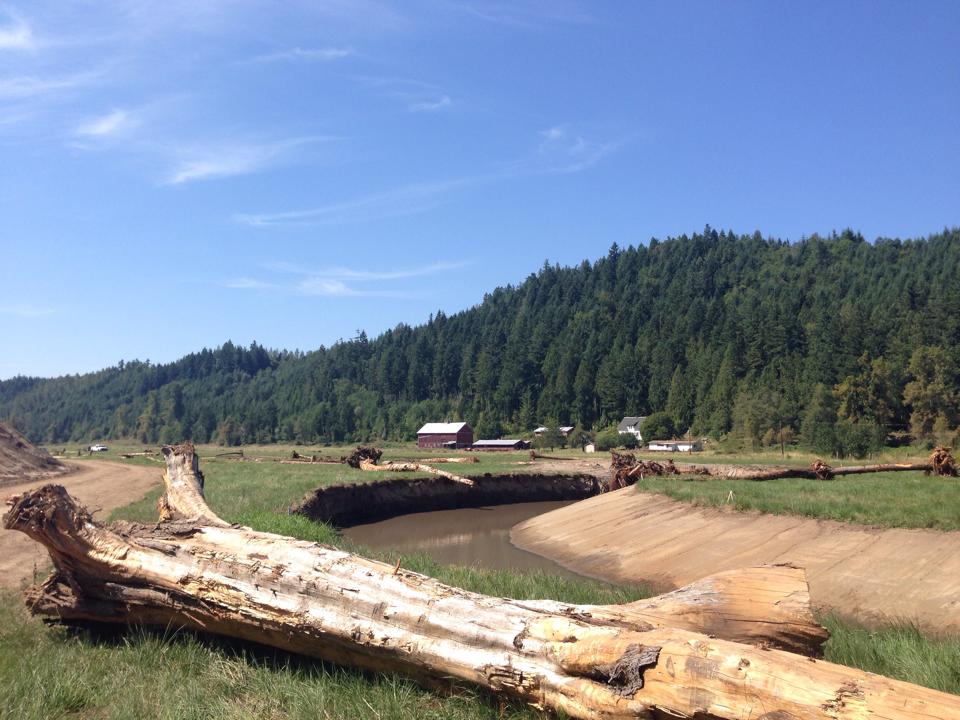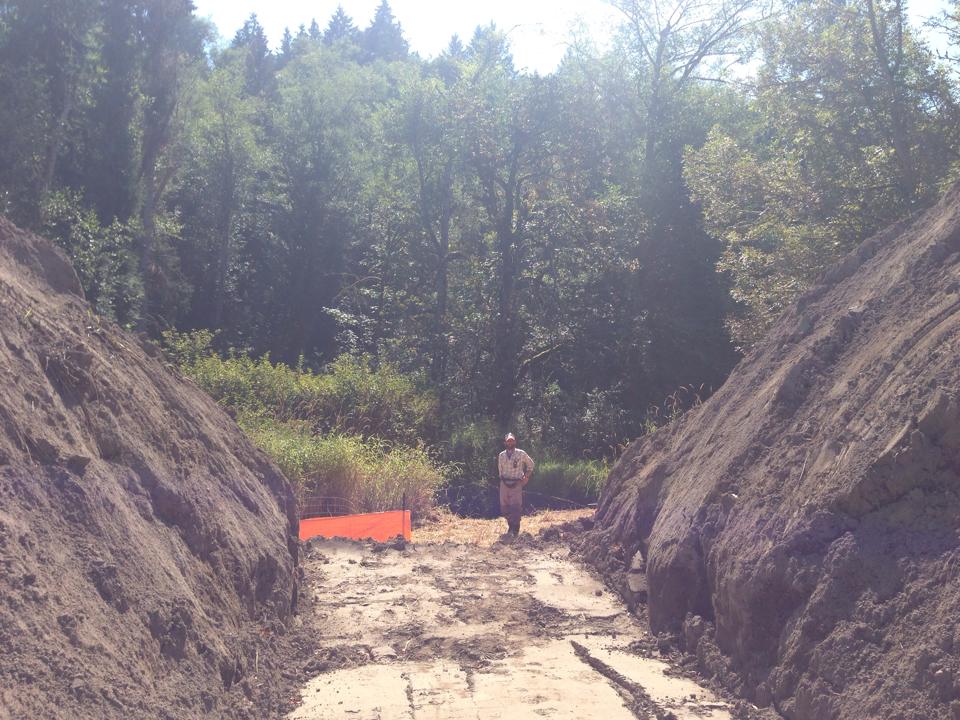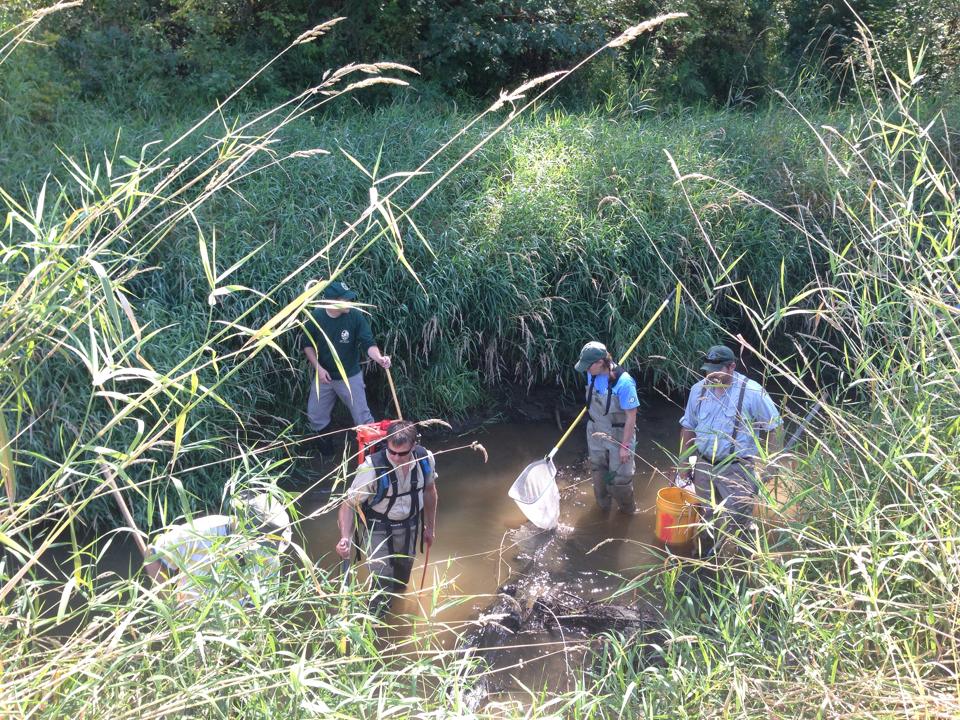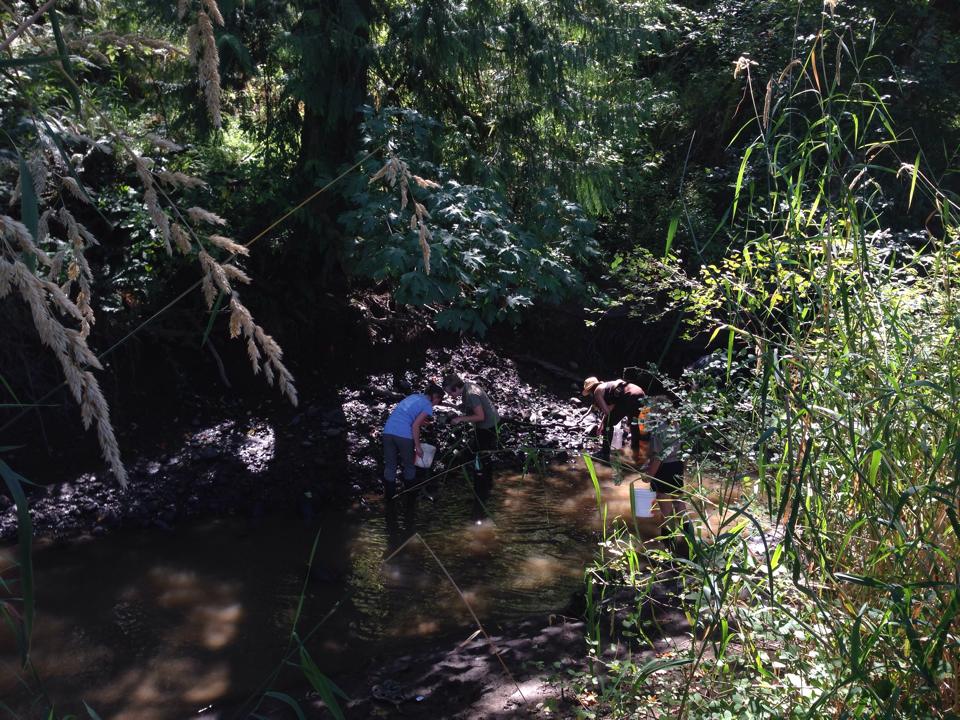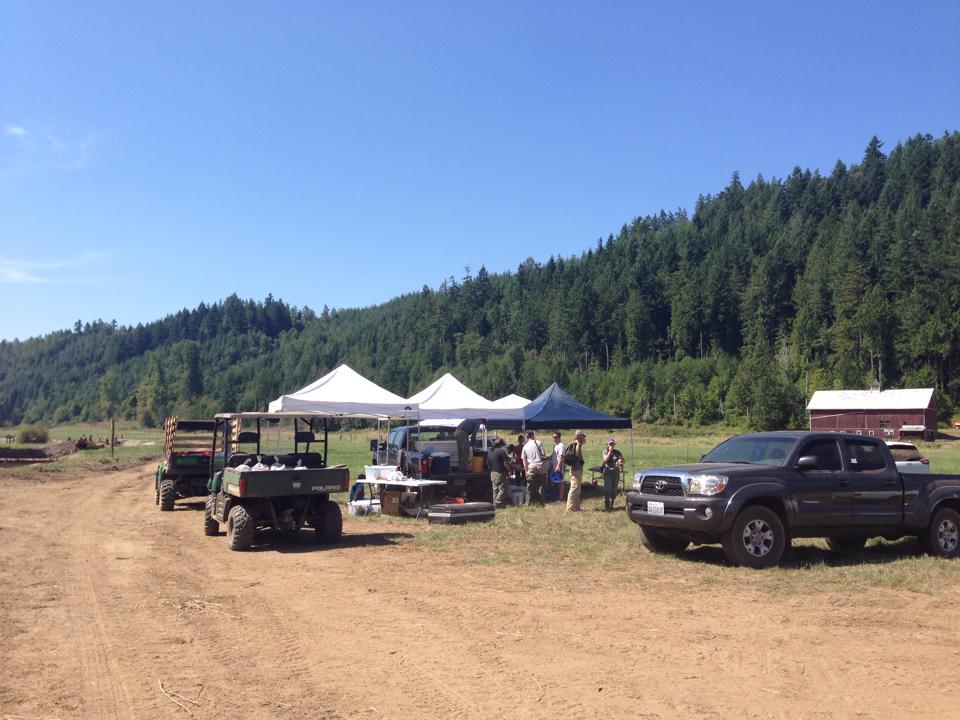With construction of the new Ohop creek bed nearly 75% complete, it’s time to start preparing for the big transition. Within the next week, water will be diverted from the old canal into the new, meandering fish-friendly creek. It’s not as simple as blocking water flow, though.
In order to prepare, project partners hosted a big fish-out the last week of August. Water was pumped from the old channel, carried through a pump and released back into the Ohop downstream of the new channel. This effectively drained the old Ohop creek, without adding water to the new bed yet.
But what about the fish?!
That’s where the fish-out came in! The South Puget Sound Salmon Enhancement Group, Nisqually Land Trust, Nisqually Indian Tribe, Nisqually River Foundation, WA Fish and Wildlife and a lot of volunteers arrived on site early Monday and Tuesday mornings to capture aquatic animals and release them downstream.
Creatures captured included coho salmon, lamprey, sculpin, crayfish and freshwater mussels! Volunteers wielded electro-shocking tools, fish nets and buckets, collecting as many fish as possible.
